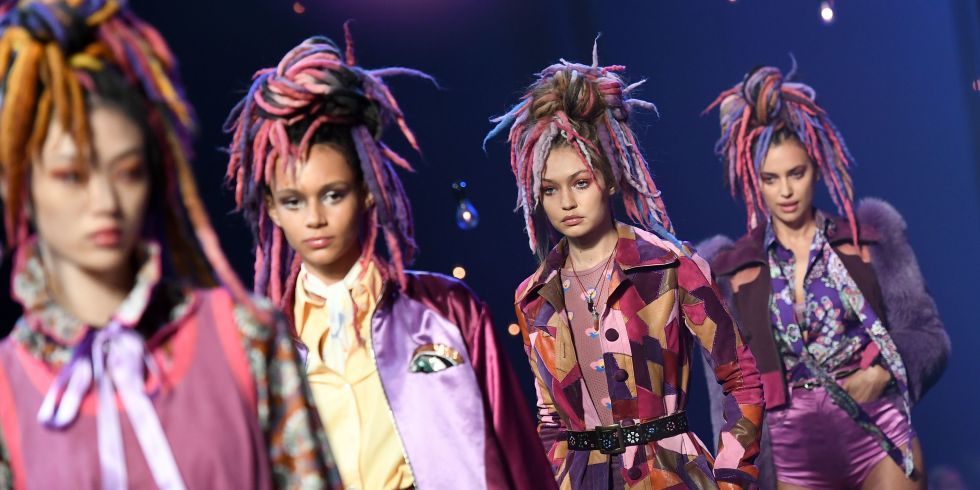Cultural appropriation within the designer fashion industry is a complex and multifaceted issue that encapsulates the dynamics of cultural exchange, power imbalances, and ethical considerations. It involves the adoption of elements from one culture by individuals or groups, particularly those belonging to a dominant culture, often without understanding or respecting the original meaning and context. This phenomenon raises pertinent questions about artistic inspiration, authenticity, and the commercialization of cultural symbols.
To understand cultural appropriation in fashion, it is essential to explore various categories exemplifying this controversial practice. These manifestations can range from the trivial to the egregiously offensive, often sparking debates and calls for accountability among designers and brands.
One prominent example is the appropriation of Indigenous designs and motifs. High-profile fashion houses and designers have frequently drawn inspiration from Indigenous cultures without appropriate credit or compensation. Consider the case of a renowned designer’s collection featuring traditional Native American patterns or symbols. This act can strip these cultural identifiers of their sacred meanings and commodify them for profit, resulting in a loss of heritage and authenticity.
Moreover, African influences in Western fashion often come under scrutiny. The predictable cycle of African-inspired textiles emerging on runways presents a compelling case of cultural appropriation. For instance, designers have showcased vibrant Kente cloth or Ankara prints, typically used in traditional African attire, often without any acknowledgment of their origins. Such instances can marginalize the very cultures they draw upon, minimizing their artistic contributions while simultaneously elevating a designer’s brand.
Another area that illustrates cultural appropriation is the use of traditional Asian garments in modern luxury collections. Designers have been known to incorporate elements of traditional Kimono silhouettes or Chinese Cheongsam into their works. This practice raises questions about the commodification of clothing that holds deep historical and cultural significance. When western brands utilize such garments merely as aesthetic embellishments, they can inadvertently perpetuate stereotypes and ignore the context in which these clothing pieces exist.
Access to traditional attire also involves issues of privilege. Designers from the West often capitalize on the aesthetics of cultures they do not belong to, receiving accolades for their creativity while the original artisans struggle to gain recognition for their work. This dynamic exemplifies a significant imbalance in the fashion industry, leading to calls for greater awareness and respect toward cultural narratives.
Another noteworthy compendium of instances features music and pop culture influences. Throughout modern history, several pop-culture figures have embraced various fashion statements representative of marginalized communities. When celebrities sport cornrows, turbans, or bindis, they sometimes overshadow the significance of these cultural practices. The decision to wear such styles oftentimes lacks understanding, reducing rich cultural expressions to mere fashion statements devoid of their historical context.
Additionally, promotional campaigns serve as another frontier where cultural appropriation plays out in fashion. For example, cosmetic brands that launch campaigns featuring models adorned with traditional hairstyles or accessories often do so with questionable intentions. The use of cultural symbols in advertising can create a fetishization of cultures while perpetuating stereotypes. This results in a commodification that trivializes deeply rooted cultural practices, leading to backlash from the communities that originate them.
Moreover, the practice of employing traditional artisans to create garments for large fashion houses can also fall under scrutiny. While this may seem like a collaborative effort, it often lacks fair compensation or recognition. Large brands may profit immensely from these artisans’ craft while failing to provide equitable remuneration or spotlight their contributions. This raises significant ethical questions surrounding the sustainable and responsible practices within the fashion ecosystem.
Social media, too, plays a crucial role in perpetuating or challenging cultural appropriation in fashion. Influencers and public figures wield immense power in shaping trends. When individuals with substantial platforms adopt cultural attire or symbols—as a superficial engagement—this not only propagates appropriation but may also incite backlash from those who feel their culture has been misrepresented or exploited.
As awareness of cultural appropriation increases, consumers and activists alike are becoming more vocal about their demands for accountability in the fashion industry. Many people are advocating for ethical practices that honor cultural origins, calling for designers to engage authentically with the cultures they draw inspiration from. This underscores the importance of education and dialogue surrounding cultural narratives to foster mutual respect and understanding.
In conclusion, navigating the complexities of cultural appropriation in designer fashion is essential for fostering an ethical and inclusive industry. By examining diverse instances of appropriation—from Indigenous patterns to African textiles and beyond—it becomes increasingly clear that the line between cultural appreciation and appropriation is nuanced and easily blurred. Designers must strive for authenticity, respect, and acknowledgment of cultural significance in their work. Fashion, as an influential cultural artifact, should prioritize collaboration and celebrate the diversity it reflects, rather than exploit it for profit.
